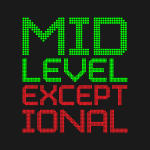The Evolving Nature of NBA Ownership
This piece is cross-posted at Hardwood Paroxysm. Check it out there.
Steve Ballmer is the NBA’s knight in shining armor. He rode in on his $2 billion horse to rescue the league’s damsel in distress (the Los Angeles Clippers), formerly held captive by a deranged, racist villain (Donald Sterling), plucked them from the lunatic’s tower and ran, screaming and celebrating wildly, into the sunset. If there’s been a crazier, more contentious exchange of ownership in sports history, I’m unaware of it. In less than four months’ time, Sterling went from being the second-longest tenured owner in the league to accepting his exile, a myriad of complicated legal proceedings and public relations wars wedged in between.
Ballmer’s ownership situation is by far the most unique in the league – not only did he buy a team that wasn’t up for sale in the eyes of its owner, he also ponied up more than triple any previous sale price in NBA history.* While the former Steve Jobs acolyte is certain to make waves, as much for the highly publicized nature of how he acquired the team as his bluster, looking deeper into the past decade of franchise sales, as well as they people who’ve entered the fraternity of owners during that time, reveals some interesting overall trends about the nature of NBA ownership.
Half the NBA’s teams have changed hands in the past decade, and 11 new primary ownership groups have joined the league since 2010. Between 1998 and 2011, sale prices hovered steadily between $200 million and $400 million, the lone exceptions being the Wizards ($550 million to Ted Leonsis, but the sale included the Verizon Center) and the Warriors (who were the subject of a four-pronged bidding war, which eventually drove up the price to $450 million, paid by Joe Lacob, Peter Guber and their investors). In 2012, Vivek Renadive bought the Sacramento Kings for a record $534 million, a record soon broken when Herb Kohl sold the Milwaukee Bucks, and broken again when Donald Sterling was forced to sell the Clippers.
It isn’t just the price tags that are changing; the sources of owners’ wealth have changed as well. A glance at this chart shows how:
Prior to 2002, most NBA owners made their money in somewhat “traditional” industries. The three oldest ownership groups in the league are the Jerry Buss family, Herb Simon and Jerry Reinsdorf, all of whom accumulated wealth through real estate and real estate litigation. Owners made their fortunes in auto or farm machinery dealerships (Miller, Holt), or in printing (Taylor), or in telecommunications (Dolan, Peddie), or on Wall Street (Alexander), or by inheriting/marrying into it (Arison, Kroenke). Even Mark Cuban, a self-made internet billionaire who bought the Dallas Mavericks in 2000, would have to be considered a member of the old guard, despite his blacksheep persona.
When Boston Basketball Partners, LLC finalized the purchase of the Boston Celtics on December 31st, 2002, it signaled a subtle but important shift in the makeup of NBA owners. Two of the four executive members of the group made their money by more “traditional” means: H. Irving Grousbeck made his fortune as co-founder of Continental Cablevision (later Media One, a cable company) and Robert Epstein (of the Abbey Group) made his in real estate. The other two executives, Wyc Grousbeck and Steve Pagliuca, worked at private equity/ investment firms (Highland Capital Partners and Bain Capital, respectively). The presence of individuals with a background in investments was a sign of things to come.
In 2006, Clay Bennett of Dorchester Capital, a private investment firm, led a group who bought the Seattle SuperSonics and moved them to Oklahoma City. In 2010, Mikhail Prokhorov (Nets), Joe Lacob (Warriors) and Tom Gores (Pistons), all of whom had venture capital or investment backgrounds, entered the fray. In 2011, a group led by Joshua Harris of the Apollo Global Management private equity firm won a bid to buy the Philadelphia 76ers for $280 million. And finally, Marc Lasry and Wes Edens, who bought the Milwaukee Bucks for $550 million in May, earned their fortunes in hedge funds and private equity management, respectively.
On the surface, the involvement of investment-oriented ownership groups may signify that NBA franchises are sound investments, great news for NBA fans, who occasionally give in to fretting about the long-term financial health of the league. Also, the rush many groups have felt to purchase a team (exhibited by the sharp rise in prices and rapid rate of sales) suggests that the upcoming media rights negotiations will net a significant influx of money for the NBA and its owners, which will hopefully mean increased profits to be shared with players, league-wide financial stability and (fingers crossed) labor peace.
While the split between “stats guys” and “analytics guys” is probably somewhat overblown, it’s fair to speculate whether ownership groups coming from an analysis-based, numbers-heavy background like hedge fund management and private equity investment are more open to the role of advanced statistics as they pertain to team-building. That isn’t to say the Miller family (owners of the Utah Jazz), for example, are morons because their original fortune was made selling cars instead of stocks, bonds and mutual funds. But there are definitely distinctions between the various lucrative empires built by these men before they became NBA owners. Is it possible those distinctions give some teams advantages over others?
That probably depends on the influence you believe owners have in shaping their teams, which can vary from situation to situation. For some, buying a team is a vanity purchase. They’re interested in the social status (and prospective profits) of owning a franchise rather than the day-to-day minutiae of running one. Think of Glen Taylor in Minnesota, who is content to hire someone from within the state and turn the reins completely over to them (see McHale, Kevin and Saunders, Flip). Some are interested, but understand it’s best to hire smart people and get out of the way. Peter Holt and Micky Arison, owners of the Spurs and Heat, respectively, fall into that category. Some owners are aggressively meddlesome. Dan Gilbert made his money in mortgage lending, a numbers-driven, future-oriented business, and his tenure as the owner of the Cavaliers has been uneven, to say the least. The league’s only banking magnate, Robert Sarver, has had somewhat of a checkered history since he bought the Suns in 2004. Tom Gores has a less than sterling reputation, and just empowered advanced stats-skeptic Stan Van Gundy to run the show in Motown.
A few members of the NBA’s circle of “investment” owners have had success. Clay Bennett hired Sam Presti away from San Antonio, where the former Rhodes scholar candidate had worked his way up the organizational power chart, to run the Sonics/Thunder, who are now one of the most successful and profitable teams in the league. Leslie Alexander, who made his millions on Wall Street, hired and empowered Daryl Morey, who’s now the face (for better or worse) of analytics in the NBA. Other situations are more mixed – Boston employs a basketball lifer as its chief decision maker (Danny Ainge) but employs a coach famous for embracing advanced statistics (Brad Stevens). The Sixers’ primary decision maker, Sam Hinkie, is a former Bain Capital employee and Stanford alumnus who apprenticed under Morey, but his vision is far from complete (or even taking shape). Joe Lacob’s first GM hire was a former agent. The Milwaukee situation is too fresh to judge.
Despite the mixed results of the group to this point, having an owner with an investment background is certainly appealing. For one thing, they’re probably used to taking the long view. Secondly, in a salary cap league, managing a finite amount of resources in an effort to put a competitive team on the floor without risking your future is paramount. Owners who made their millions in other ways can certainly understand and appreciate these values as well; it’s less a dichotomy between members of the “old guard” and members of the new, and more a prism.
What space does Steve Ballmer occupy on that prism? It’s probably too early to judge. He’s certainly in position to appear like he’s doing a good job out of the gate, given the fact that two marquee players (Chris Paul and Blake Griffin) are on his payroll, and the Clippers will win a lot of games. Even if you’re inclined to think analytics-driven front offices are better than others, sometimes teams still rely on luck. Clay Bennett and Sam Presti are well-regarded in league circles, but their track record would look much different if the Portland Trail Blazers had passed on Greg Oden and picked Kevin Durant instead. It is, after all, still a players’ league, no matter who signs the checks or signs the players.
If you don’t have a Kevin Durant on your favorite team – and most teams don’t – having an owner with an investment background seems like the most appealing option to give your team a chance to acquire one. Knowing your owner is involved, hires and empowers like-minded people, and views building teams the same way good investments are found, with diligence, patience and an eye on the big picture, has got to be somewhat comforting.
Will the pre-NBA training of owners with hedge fund, stock market and private equity backgrounds result in more wins than losses? Well, it’s an investment. You have to wait and see.
Appendix:


